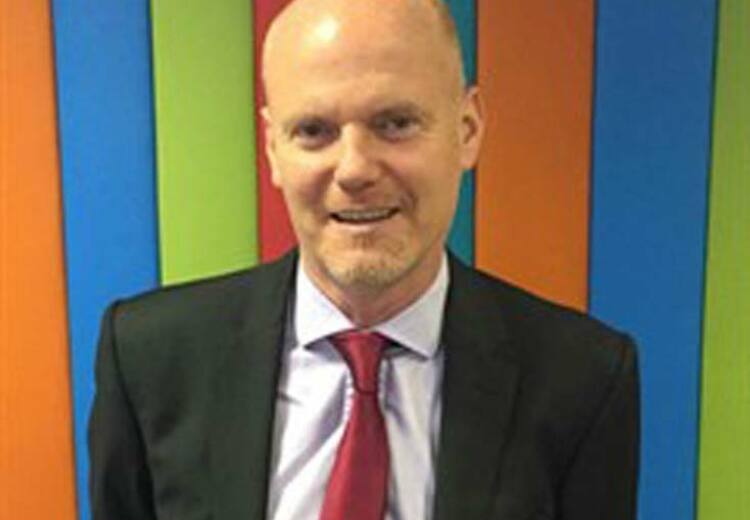The Henry Bloom Noble Healthcare Trust has donated ?41,000 for the purchase of new equipment at Noble’s Hospital Radiology Department.
The money has paid for a specialist MRI-compatible anaesthetic machine, to improve care for patients, including children, with serious and life-threatening conditions, and portable screens to give patients enhanced privacy.
The donation was made after Radiology Department medical staff presented business cases to the Trust, demonstrating how patient care and treatment could be improved.
The Trust was originally established in 1888 by the Island’s greatest benefactor, Henry Bloom Noble, in memory of his wife Rebecca. It was dedicated to improving healthcare in the Isle of Man and today, thanks to generous public donations and bequests, the Trust continues that work by funding the provision of new equipment, training and education, research and measures to improve conditions in hospitals, care homes and at home for convalescing patients, the sick, disabled, handicapped and infirm people.
When technological advances which will improve patient care and outcomes are identified, the Trust can contribute funds after careful consideration of the benefits.
Earlier this year it donated ?68,000 to purchase specialist equipment for the hospital’s new Endoscopy Unit, and the Trust has also funded a year-long research project into the use of telemedicine to improve patient care.
Magnetic resonance imaging (MRI) is a frequently used technique that produces particularly good images of soft tissue. It is used extensively for imaging the central nervous, musculoskeletal, and cardiovascular systems, and also the pelvis and liver. MRI machines work by generating a very powerful magnetic field. With most modern MRI scanners, the magnetic field is always on, even between scans, so constant vigilance is important. Even quite small objects become dangerous projectiles sufficient to injure or kill anyone in their path, and larger objects can trap or crush a patient or staff member.
Consultant Anaesthetist Dr Adrian Dashfield explained: ‘An oxygen cylinder can become a dangerous projectile as it is drawn to the magnet, and could cause very serious injury to anyone in the machine as we well as seriously damage the MRI scanner.
‘Conventional anaesthetic machines are very robust and built largely from ferrous metal. They also have insufficient wheel locks to prevent them being pulled to the powerful magnet. Consequently, patients in intensive care, or others admitted in a collapsed state and requiring assisted ventilation, would be unable to undergo MRI scanning as conventional anaesthetic machines cannot be safely used in the powerful magnetic field generated by an MRI scanner. A number of these individuals may have serious soft tissue infections, such as meningitis, encephalitis, epidural abscess and intra-abdominal sepsis, where an MRI would be of value in achieving an early diagnosis as well as assisting with their management.
‘The new MRI compatible anaesthetic machine is made by the same manufacturer that supplies the present conventional anaesthetic machines to the hospital. Functionally it is identical to the existing machines, meaning that staff will be familiar with its workings, but where possible materials other than ferrous metals have been used in its construction. Oxygen cylinders are firmly secured to the machine and it has powerful brakes to prevent it being drawn towards the magnet. It is used without problems in many other hospitals for patients requiring an MRI.’
In addition, the new machine in future could reduce the need for children to be taken off-Island for MRI scans. Due to the need for patients to remain still throughout the 20-30 minute scan, youngsters with suspected neurological problems need to be anaesthetised which, without the new machinery, has so far not been possible. Future developments including increased staffing levels in the MRI scanner could result in children being scanned at Noble’s Hospital, rather than Alder Hey Children’s Hospital.
The Eric and Marion Scott Trust supplemented the equipment by purchasing monitoring equipment to enable patients to be monitored from outside the room during their procedure.
Dr Dashfield added: ‘Provision of this machine will improve the care of some patients at Noble’s Hospital with serious, life-threatening conditions and could obviate the need of children to have to travel off-Island for their MRI scans.’
The Trust has also paid for five patient privacy screens for use in the Radiology Department. Growing demand has seen the department capacity increase, but the space for patient privacy is limited. The new portable Kwickscreen units will offer additional privacy in the two CT scanner rooms and Ultrasound room, as well as to patients awaiting scans outside the rooms.
CT/MRI Radiographer Paul Subachus said: ‘Screens or curtains have long been used in hospitals for patient privacy. Portable screens are the most versatile, and can be fairly cheap, but most are often non-descript, cumbersome, very clinical and become shabby quite quickly.
‘Kwickscreen units not only provide privacy but also enhance the environs for the patient. They are easy to handle, unobtrusive when retracted and are pleasant to look at when deployed. They are retractable and adaptable, so can be extended to varying lengths and bent.’
In addition, the screens can have a picture printed on them to enhance the clinical environment, and the Isle of Man Photographic Society agreed to provide local images to feature on the new screens.
Trust chairman Terry Groves said: ‘The Trust exists to help improve healthcare provision in the Isle of Man, to enhance patient treatment and care. Enabling the Radiology Department to conduct MRI scans for more patients, including children who will no longer have to travel off-Island for the procedure, will assist with rapid and reliable diagnosis of some very serious conditions. This is clearly a step forward for patient treatment in the Island. Also of great importance to the Trust is the care given to patients, and privacy, such as during and while awaiting procedures like CT and MRI scans, is essential. The purchase of the new screens will enhance privacy with the added benefit of improving the visual environment in the department.
‘Dr Dashfield and Mr Subachus put forward clear and compelling business cases which the Trust is pleased to have been able to support.’
The Henry Bloom Noble Healthcare Trust relies on donations and bequests from the public. If you would like to support the Trust, visit the website www.hbnhealthcaretrust.org.im, email info@hbnhealthcaretrust.org.im or call 616108.
Photo - CT/MRI Radiographer Paul Subachus, Consultant Dr Sivakumar Balasubramanian, Henry Bloom Noble Healthcare Trust chairman Terry Groves and Trustee Malcolm Clague.








